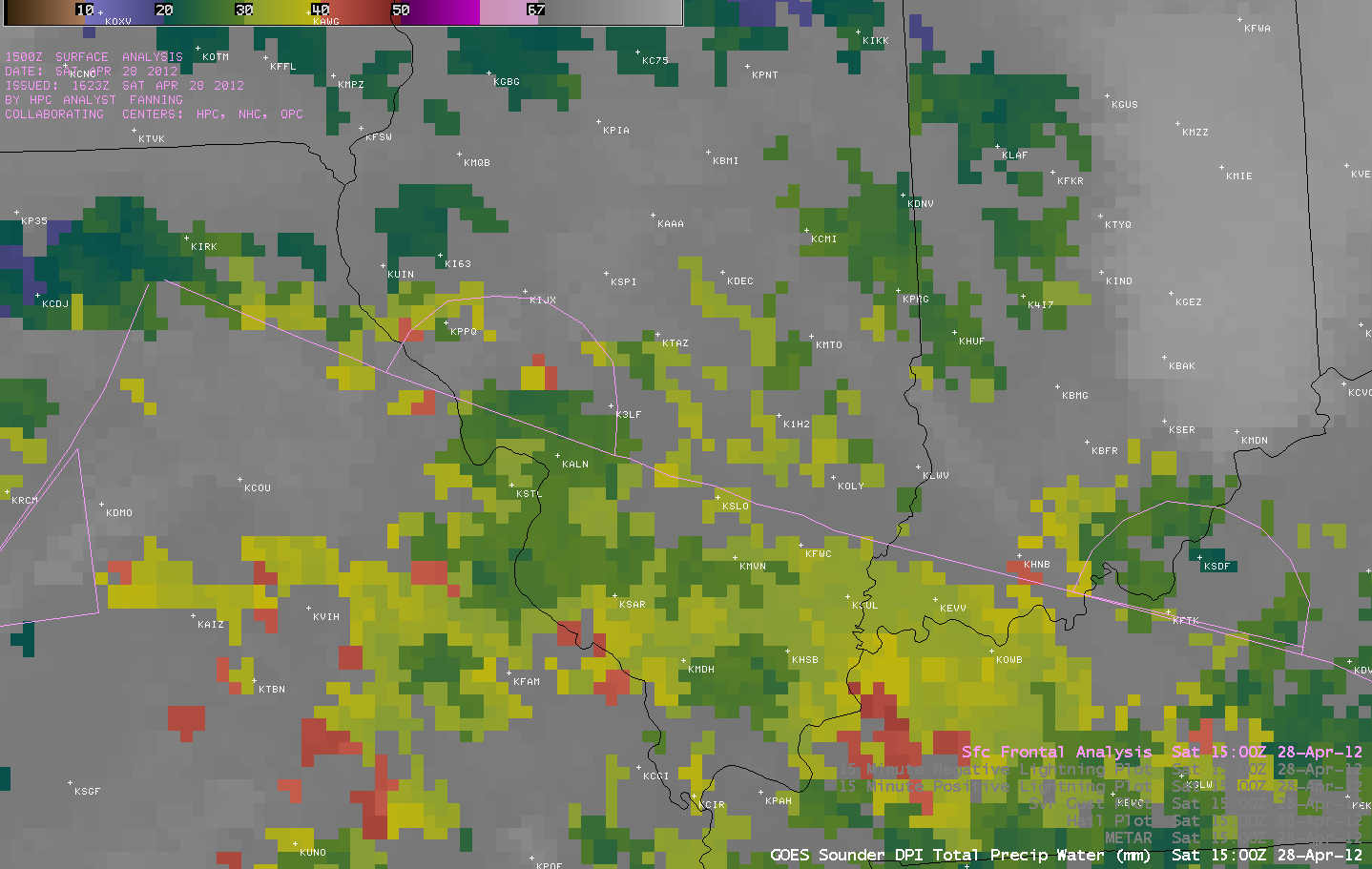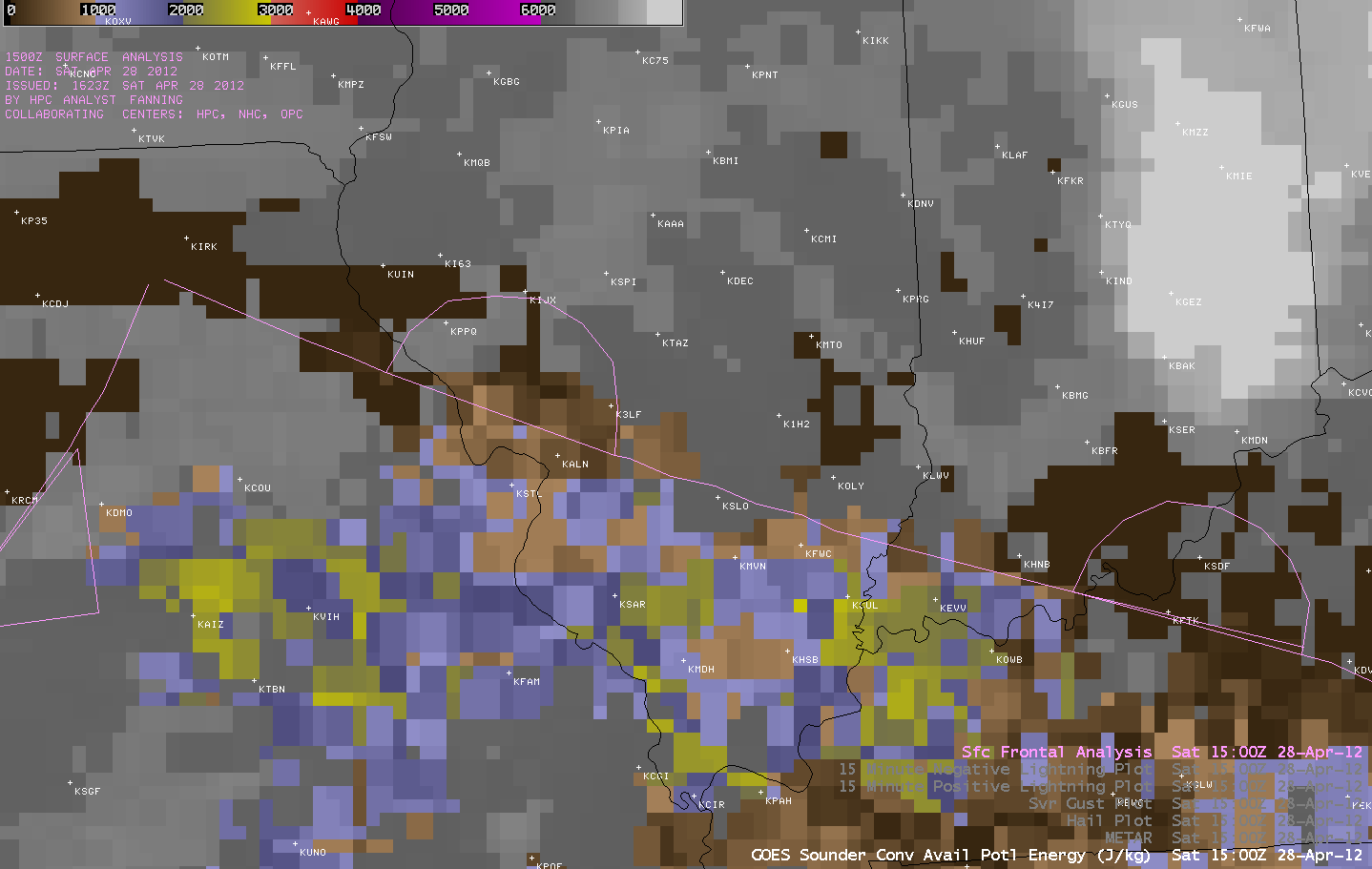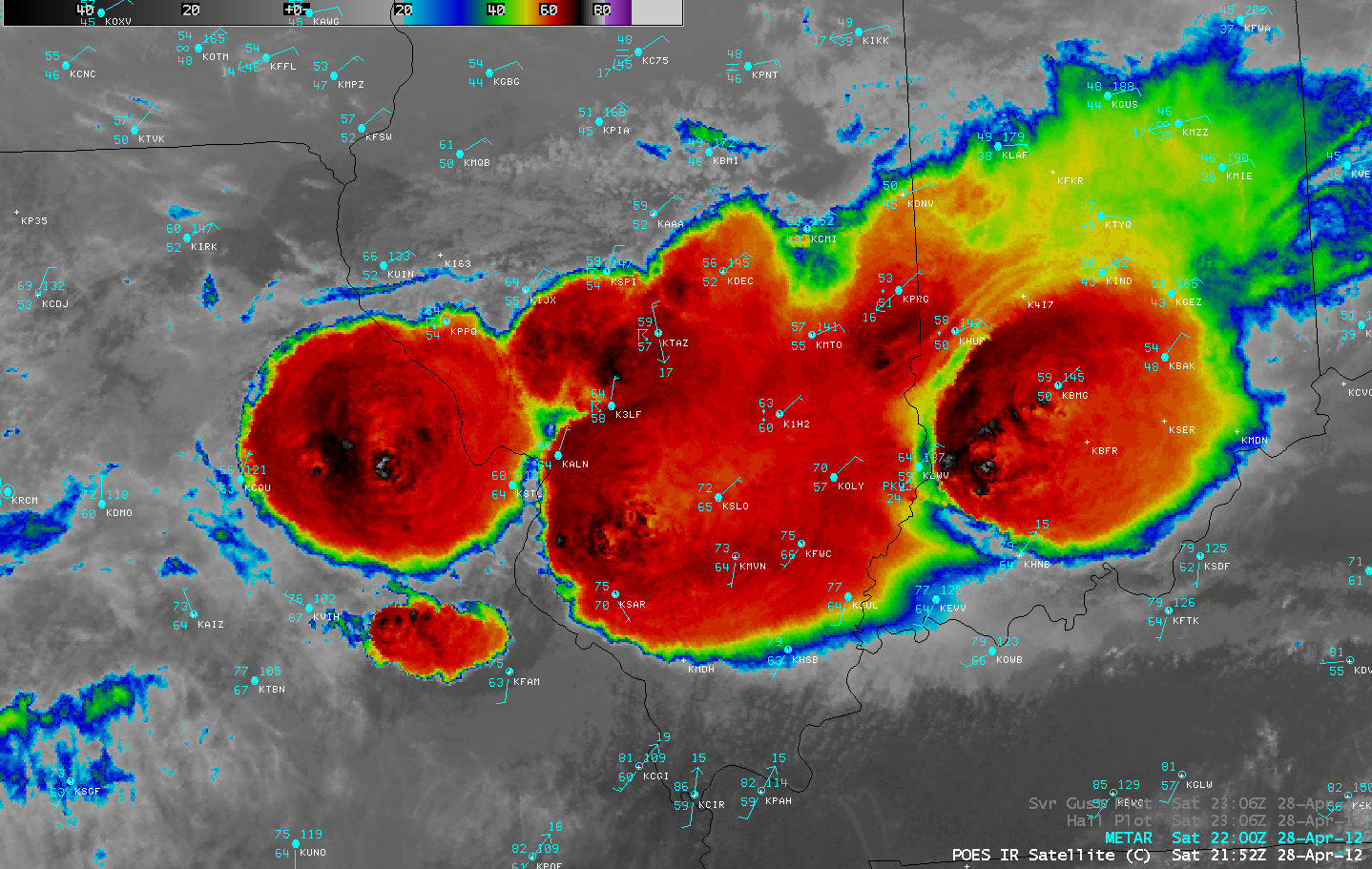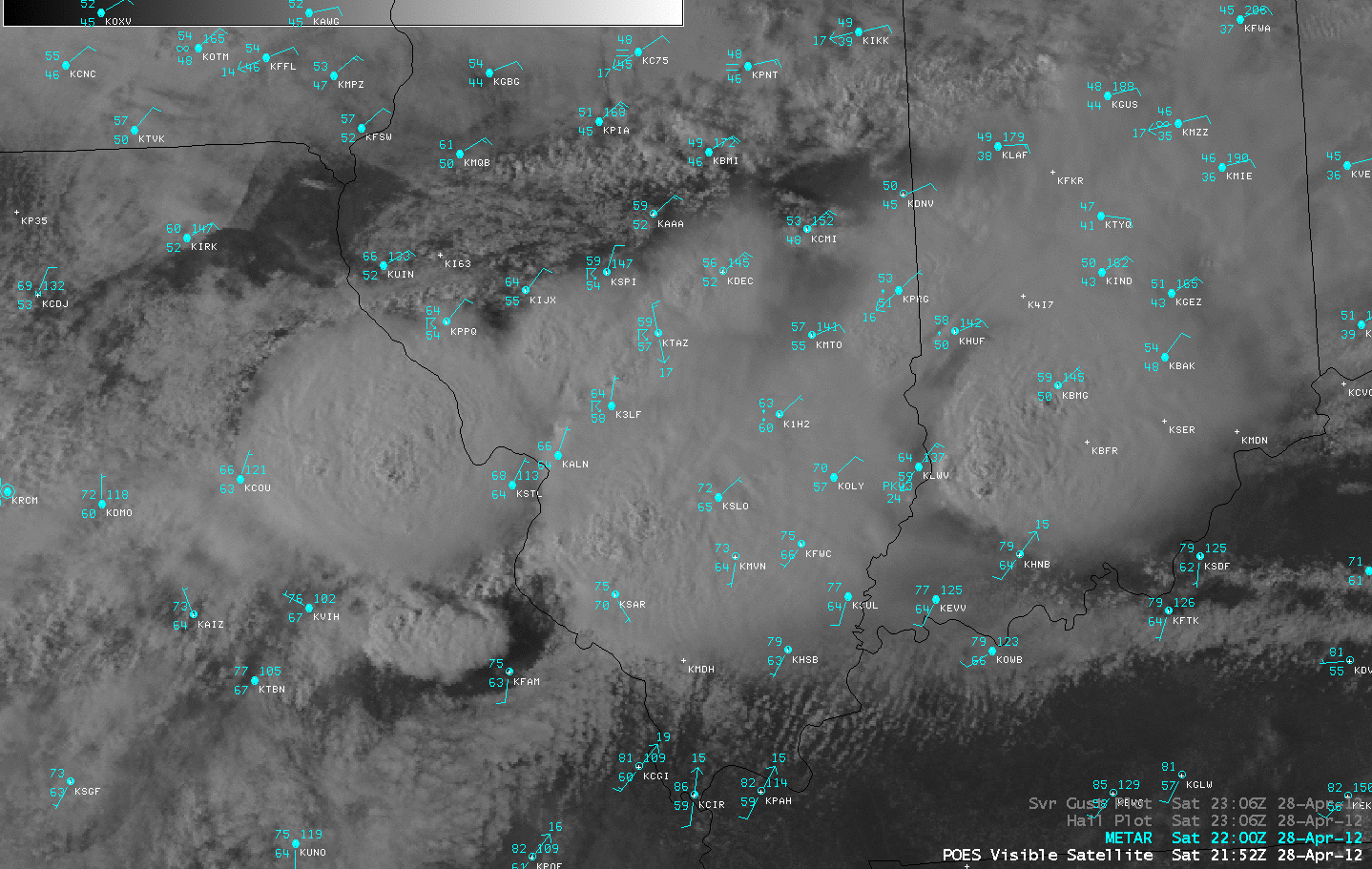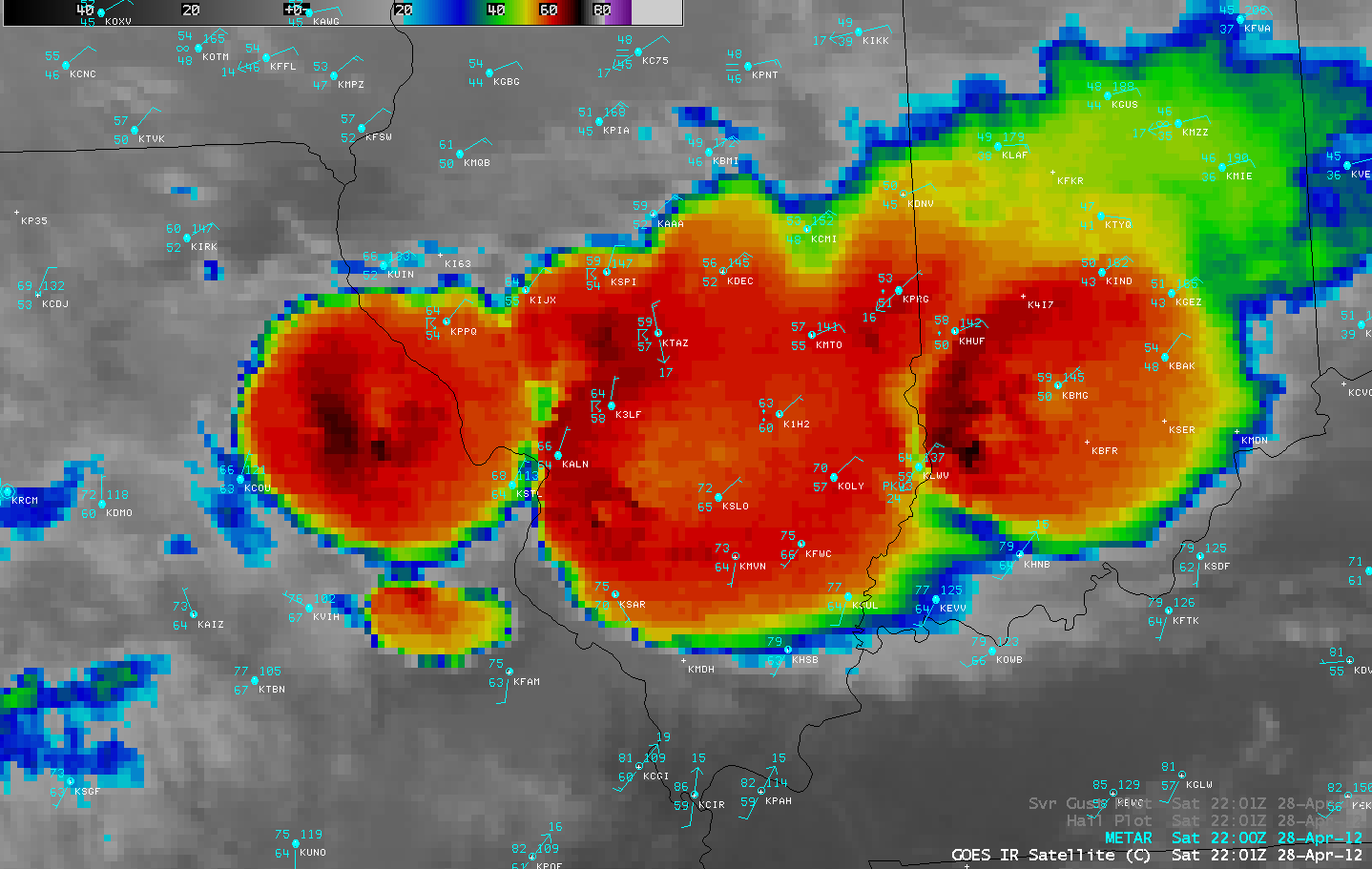Severe thunderstorms across Missouri, Illinois, and Indiana
AWIPS images of 10-km resolution GOES-13 sounder Total Precipitable Water (TPW) derived product imagery (above) and the corresponding GOES-13 sounder Convective Available Potential Energy (CAPE) derived product imagery (below) showed that moisture (TPW values as high as 45 mm or 1.78 inches near Saint Louis, Missouri at 16 UTC) and instability (CAPE values as high as 4300 J /kg acorss southern Illinois at 20 UTC) was in place along and to the south of a quasi-stationary warm frontal boundary that was located from eastern Missouri across southern Illinois and southern Indiana during the late morning and early afternoon hours on 28 April 2012.
4-km resolution GOES-13 10.7 µm IR channel images (below; click image to play animation) indicated that thunderstorms developed in Missouri and southern Illinois, and then tracked east-southeastward along the warm frontal boundary. These storms produced a long swath of large hail and severe wind gusts, as can be seen by the SPC storm reports overlaid on the IR imagery. Later in the afternoon, some of the organized convection began to exhibit well-defined “enhanced-V” storm top signatures, which often denotes thunderstorms that are likely producing (or will soon produce) either large hail, damaging wind gusts, or tornadoes.
Greater details can be seen in a 1-km resolution POES AVHRR 10.8 µm IR image with overlays of METAR surface reports and cumulative SPC storm reports of large hail and damaging wind gusts (below). A long swath of hail and damaging winds can be seen, including one incident where a wind gust of 50 mph blew over an outdoor beer garden tent around 20:50 UTC (resulting in a number of injuries and one fatality).
A compariosn of the 1-km resolution POES AVHRR 0.63 µm visible channel image with the corresponding 10.8 µm IR channel image (below) again showed great detail in the overshooting top and cloud top thermal couplet structure.
A comparison of the 1-km resolution POES AVHRR 10.8 µm IR channel image with the corresponding 4-km resolution GOES-13 10.7 µm IR image (below) demonstrates the value of higher spatial resolution for detecting important cloud top temperature patterns. In this case, the coldest cloud top IR brightness temperature on the POES AVHRR image was -78º C, compared to -69º C on the GOES-13 IR image. Also note the slight northward parallax shift in the GOES-13 IR image.


